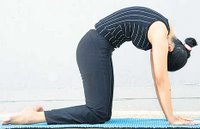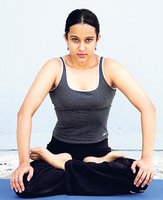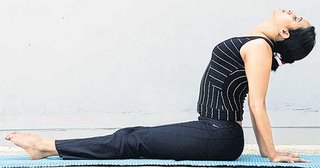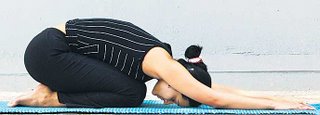There are many stories on the internet (and elsewhere) about people who take ambien expecting a good night's sleep, and then wake up to discover that they have been eating peanut-butter sandwiches during the night - personally, the only way I'd ever eat a peanut-butter sandwich is if I was asleep and then had no memory of it afterwards.
Taste is personal. But back to the urban myths. It seems that people have been sleepwaking their way through routine tasks and putting themselves in danger by trying to cook or, worse, driving a car. The FDA, never a body to be panicked into anything, last year required all drugs that are classed as "sedative hypnotics" to carry a warning. It's a strange kind of warning. It goes, "If you take this drug, don't walk around when you're alseep." But you get the idea.
Anyway, because sleep-aid medications are a part of this broad class of sedative hypnotics, I thought I'd better say a few words about it. By the way, did you know that the number of prescriptions for sleep-aids grew by 10% in 2007? That millions more prescrptions than in 2006 and does not include all the internet sales that avoid the need for a prescrption. So a vast number of people, not just in the US, but around the world, are knocking back sleep-aids like ambien (the brand leader).
So, what is the real scale of this sleepwalking phenom? Well, the World Health Organization (WHO?) has just woken up to the potential problem and has been gathering evidence. The use of sedative hypnotics for insomnia has been around for decades. In the good old days of the last century, people were happily swallowing benzodiazepines and then experiencing minor disorientations. Some found their memory was affected or they were more likely to get confused. With the more modern varieties of drugs (which are nonbenzodiazepines - that makes you feel better does it not?), we now have reports of some behavioral disturbances (fancy words including confusion, agitation and, of course, sleepwalking).
To find out exactly what level of crisis the world is facing, the WHO instructed its Collaborating Centre for International Drug Monitoring to spread its net wide. It draws its data from twenty-four countries which gives us a good snapshot of what is going on around the world. The latest news is just in. You'd better prepare yourselves for a shock. In 2006/7, there were 867 reports of adverse reactions following the use of nonbenzodiazepines. That is 36 reports per country over a 365 day period. Now go back to the fact that millions of people around the world are taking sedative hypnotics and you have a true measure of the scale of the problem.
Oh, and I forgot to mention that experts around the world are not entirely sure why people sleepwalk. The cause could be anything (including an adverse reaction to a drug). So before internet gurus and newspaper journalists get all excited about the latest story about a driver running a defense in a criminal trial for dangerous driving, let's remember that defendants will seize on any possibility to avoid a conviction. Personally, I'd blame the lawyers before I'd blame ambien for sleepwalking.

 Their staff has one obsession - get the patients rid of their addictions. They select only the creme de la creme of doctors, trainers, and staff members to ensure that the patients get only the best-in-class facilities and treatment. You can be doubly sure of this from the rich collection of heart-felt testimonials from the satisfied clients cured through their
Their staff has one obsession - get the patients rid of their addictions. They select only the creme de la creme of doctors, trainers, and staff members to ensure that the patients get only the best-in-class facilities and treatment. You can be doubly sure of this from the rich collection of heart-felt testimonials from the satisfied clients cured through their  They specialise on Alcohol rehab too, and their treatment includes detox, individual therapy, group therapy, depression treatment, and alternative medicine. Do check out Cliffside Malibu - the ultimate
They specialise on Alcohol rehab too, and their treatment includes detox, individual therapy, group therapy, depression treatment, and alternative medicine. Do check out Cliffside Malibu - the ultimate 
 (4) Bhramari (humming bee)
(4) Bhramari (humming bee) 












